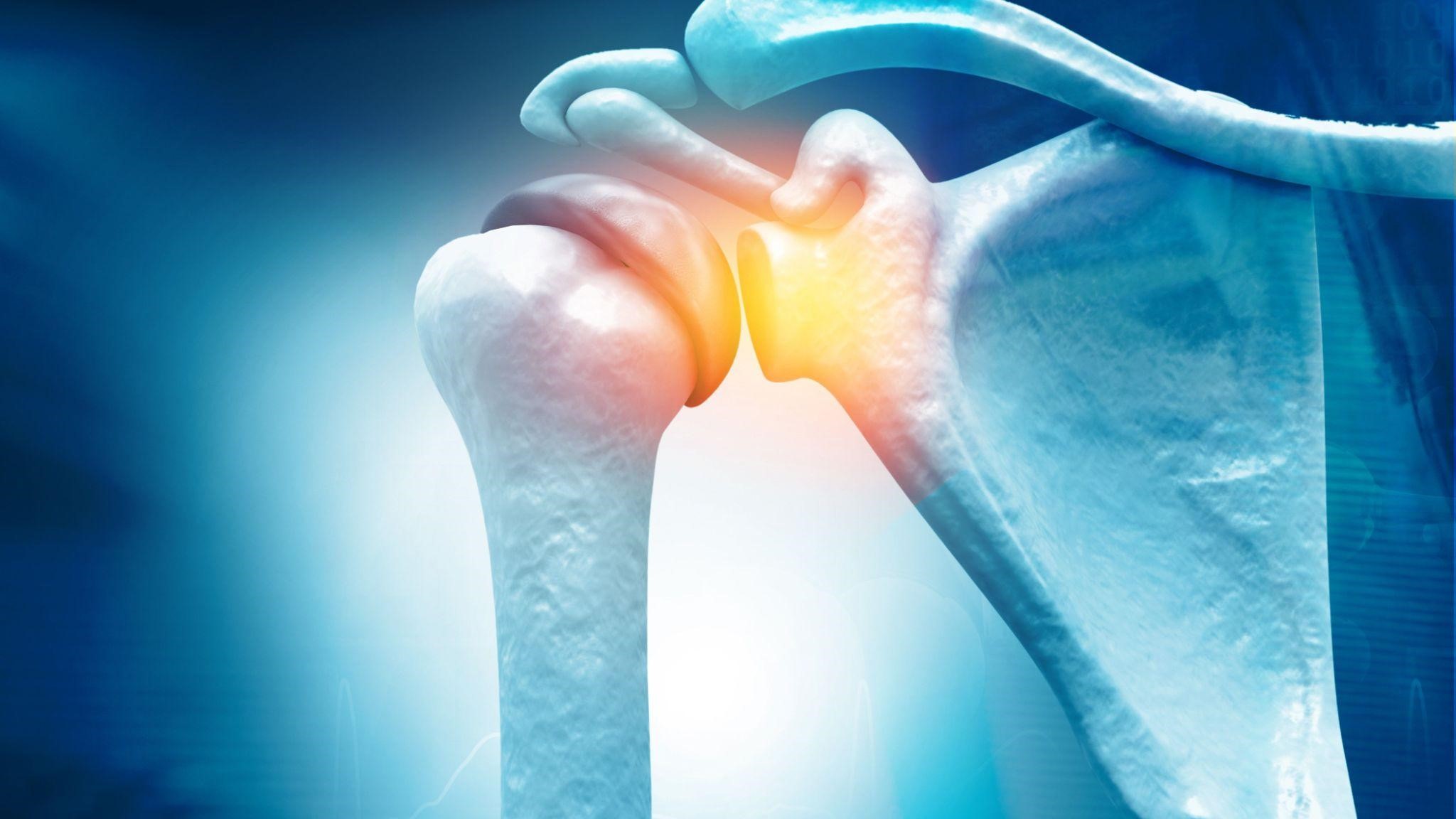Orthopaedic surgery is a surgical speciality focused on the diagnosis, treatment, prevention, and rehabilitation of musculoskeletal disorders. Orthopaedic surgery addresses a range of conditions, including traumatic injuries, degenerative conditions like arthritis, congenital abnormalities, tumours, and spinal disorders affecting the bones, joints, ligaments, tendons, muscles, and nerves. The goal of orthopaedic surgery is to alleviate pain, restore function, improve overall musculoskeletal health and enhance the quality of life for individuals experiencing orthopaedic conditions. In this blog, we discuss 10 of the most common types of orthopaedic surgery.
1. Joint Fusion
Joint fusion, also known as arthrodesis, is a surgical procedure in which two or more bones in a joint are fused together to increase stability at that joint. The procedure is often performed to address severe joint pain, instability, or deformity caused by conditions such as arthritis, trauma, or failed joint replacements. Joint fusion can be done in various joints, including the spine, ankle, wrist, and fingers. While it restricts joint movement, it can effectively alleviate pain and provide enhanced stability. Surgeons use techniques such as internal fixation with screws or plates to secure the bones during the fusion process.
The next three common orthopaedic surgeries (knee, shoulder, and hip replacement surgeries) can be categorized as joint replacement surgeries:
2. Knee Replacement
Knee replacement surgery is a common orthopaedic procedure in which damaged knee joint surfaces are replaced with artificial implants. Orthopaedic surgeons recommend this surgery for severe arthritis or joint damage, knee replacement surgery is recommended when conservative treatments fail to provide relief for severe knee pain and limitations in mobility. There are two basic types of knee replacement surgeries:
- Total Knee Replacement (TKR): In a total knee replacement, the entire knee joint is replaced with artificial components. The damaged cartilage and bone are removed, and metal or plastic implants are used to recreate the joint surfaces. Several indications, such as severe arthritis (affecting the entire knee joint), extensive cartilage damage, and joint deformities, are treated with this method.
- Partial Knee Replacement (PKR or Unicompartmental Knee Replacement): In a partial knee replacement, only the damaged part of the knee joint is replaced with artificial components. It is a more conservative option, preserving the unaffected portions of the knee. Usually, conditions like limited arthritis that affect one compartment of the knee, are treated with this form of knee replacement surgery.
3. Shoulder Replacement
Shoulder replacement surgery, or shoulder arthroplasty, is another common orthopaedic surgery that involves replacing damaged or arthritic parts of the shoulder joint with implants. Orthopaedic surgeons recommend this surgery for individuals experiencing severe shoulder pain, stiffness, and loss of function due to conditions such as osteoarthritis, rheumatoid arthritis, or post-traumatic arthritis, irreparable rotator cuff tears, or fractures. The surgery aims to relieve pain, restore joint mobility, and improve overall shoulder function.
4. Hip Replacement
Hip replacement surgery, or total hip arthroplasty, involves replacing damaged or diseased parts of the hip joint with artificial components. It is recommended for individuals suffering from severe hip pain, stiffness, and reduced mobility, often caused by conditions such as osteoarthritis, rheumatoid arthritis, or hip fractures. The surgery aims to alleviate pain, improve joint function, and enhance overall quality of life. Common indications include advanced arthritis, hip joint degeneration, and fractures that significantly impact hip function. Hip replacement surgery is a highly successful procedure, providing long-term relief for those experiencing debilitating hip conditions.
The following two orthopaedic surgeries (knee and shoulder arthroscopic surgeries) are categorised under arthroscopic surgeries or minimally invasive procedures:
5. Knee Arthroscopic Surgery
Knee arthroscopic surgery is a minimally invasive procedure, available at leading orthopaedic hospitals, used to diagnose and treat various knee joint issues, such as torn ligaments, meniscus tears, and cartilage damage. Through small incisions, an arthroscope is inserted to visualise the joint, allowing surgeons to make the repairs with tiny, specialised instruments. This surgery is often recommended when conservative treatments like physical therapy or medications fail to alleviate knee pain and dysfunction.
6. Shoulder Arthroscopic Surgery
Shoulder arthroscopic surgery, a minimally invasive procedure, is utilised for both diagnosis and treatment of various shoulder conditions. Employing a small camera (arthroscope) through small incisions, surgeons address issues like rotator cuff tears and labral tears, ligament tears, shoulder dislocation, loose cartilage, etc.
The next two common orthopaedic surgeries are examples of the most common condition-based orthopaedic surgeries include:
7. Anterior Cruciate Ligament Reconstruction Surgery
ACL reconstruction surgery is a procedure to repair a torn Anterior Cruciate Ligament (ACL). It is the ligament in the knee that provides stability to the joint. It connects the thigh-bone to the shin-bone. To replace damaged ligaments, surgeons conduct ACL reconstruction surgery in which they use grafts, often from the patient’s hamstring or a donor. This procedure is recommended for individuals experiencing instability, pain, and impaired function due to ACL tears, which are particularly common in athletes. ACL reconstruction aims to restore knee stability, prevent further damage, and facilitate a return to normal activities.
8. Trigger Finger Release
Trigger finger release, also known as trigger finger surgery or trigger finger release surgery, is a medical procedure performed to alleviate the symptoms of a condition called stenosing tenosynovitis or trigger finger. This condition occurs when the tendon sheath in the fingers becomes inflamed, leading to difficulty in extending or flexing the affected finger, causing it to “catch” or “lock” in a bent position. During trigger finger release surgery, the surgeon makes a small incision at the base of the affected finger or palm. The tendon sheath, which surrounds the tendon and restricts its movement, is widened through cuts to allow smooth gliding of the tendon.
In terms of specific musculoskeletal areas, popular orthopaedic surgeries include the following:
9. Spinal Surgeries
Spinal surgery encompasses various procedures aimed at addressing conditions affecting the spine, including herniated discs, spinal stenosis, degenerative disc disease, spinal fractures, or structural abnormalities like scoliosis. The goal is to alleviate pain, stabilise the spine, and improve overall function. Surgical interventions range from minimally invasive procedures, such as discectomy or laminectomy, to more complex spinal fusion surgeries. When conservative treatments like physical therapy or medications fail to provide relief, spinal surgery becomes a viable option to address debilitating spinal issues and enhance the patient’s quality of life.
10. Ankle Repairs
Ankle repair typically refers to surgical interventions aimed at addressing injuries or conditions affecting the ankle joint. Common indications for ankle repair surgery include fractures, ligament tears (such as the anterior talofibular ligament), chronic instability, or conditions like osteoarthritis. Depending on the specific issue, surgical techniques may involve arthroscopy or open procedures for injuries and arthritis, ligament reconstruction to address instability, or internal fixation with screws or plates for fractures. Post-surgery, patients undergo rehabilitation to regain strength and mobility. Ankle repair surgeries aim to reduce pain, restore function, and enhance overall ankle joint health for improved daily activities and mobility.
Conclusion
Orthopaedic surgery encompasses a diverse range of procedures, each tailored to address specific musculoskeletal conditions. From joint replacements like knee and hip surgeries to arthroscopic procedures for knees and shoulders and intricate surgeries like spinal fusion or ACL reconstruction, orthopaedic surgeries aim to alleviate pain, restore function, and enhance overall quality of life. With newer and more advanced surgical techniques, orthopaedic surgeons advise patients on the most suitable surgery depending on their unique circumstances. If you have a specific orthopaedic issue, consult with a doctor at a reputable orthopaedic hospital and see whether orthopaedic surgery is in order. Remember, orthopaedic surgeries play a pivotal role in providing pain relief and full range of motion, ultimately contributing to your overall well-being.
Disclaimer:
This article has been written for information purposes only, and is not a substitute for professional medical advice by a qualified doctor or other health care professional. The author is not responsible or liable, directly or indirectly, for any form of damages whatsoever resulting from the use (or misuse) of information contained in or implied by the information in this article. Always consult a qualified healthcare provider for accurate diagnosis, personalised treatment, and recommendations tailored to your individual health needs.



